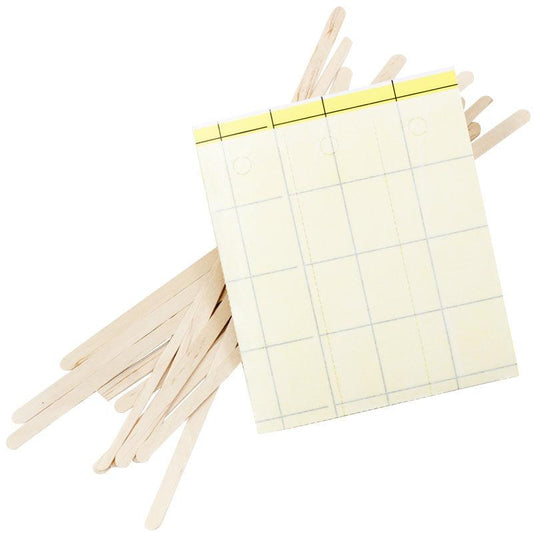Biological Control & Monitoring
 A regular monitoring program is needed for early detection of this pest. Yellow sticky cards can either be placed horizontally at the media surface or laid flat on the rims of pots to capture resting adults. Gnat Stix is another sticky card that can be placed in potted plants to monitor and trap adult fungus gnats. Potato chunks (peeled potatoes cut in quarters for plugs) can be placed on the media surface to attract larvae. Check yellow sticky cards weekly and inspect the potatoes after 2 days. Regular inspection of developing root systems for signs of fungus gnat feeding (blunt root tips) is also helpful. Another great product that is labeled for fungus gnats is Mosquito Bits. The active ingredient is a bacteria, Bacillus thuringiensis, that targets the larvae of the fungus gnats. Cultural controls include; avoiding overwatering, avoiding puddling on the floors, rigorous weed controls, and controlling algae. These cultural controls are critical before starting a biological control program for fungus gnats.
A regular monitoring program is needed for early detection of this pest. Yellow sticky cards can either be placed horizontally at the media surface or laid flat on the rims of pots to capture resting adults. Gnat Stix is another sticky card that can be placed in potted plants to monitor and trap adult fungus gnats. Potato chunks (peeled potatoes cut in quarters for plugs) can be placed on the media surface to attract larvae. Check yellow sticky cards weekly and inspect the potatoes after 2 days. Regular inspection of developing root systems for signs of fungus gnat feeding (blunt root tips) is also helpful. Another great product that is labeled for fungus gnats is Mosquito Bits. The active ingredient is a bacteria, Bacillus thuringiensis, that targets the larvae of the fungus gnats. Cultural controls include; avoiding overwatering, avoiding puddling on the floors, rigorous weed controls, and controlling algae. These cultural controls are critical before starting a biological control program for fungus gnats.
Beneficial Insects
Thank goodness for beneficial insects. If you are in a greenhouse growing business you may want to consider introducing the "good bugs" into your houses to eat the "bad bugs". The Parasitic Nematodes, Steinernema feltiae are beneficial insects that will eat fungus gnats, but not harm your plants or other "good guy insects".Last Resort - Chemical Controls
If infestations are overwhelming your plants, chemical controls might have to be used (as a last resort). Check the labels to see if the product is listed to control fungus gnats. Products such as Pyganic, or Monterey Horticultural Oil are all labeled to control fungus gnats.Photo of the fungus gnat larvae by David Cappaert, Bugwood.org




1 comment
Thank you!